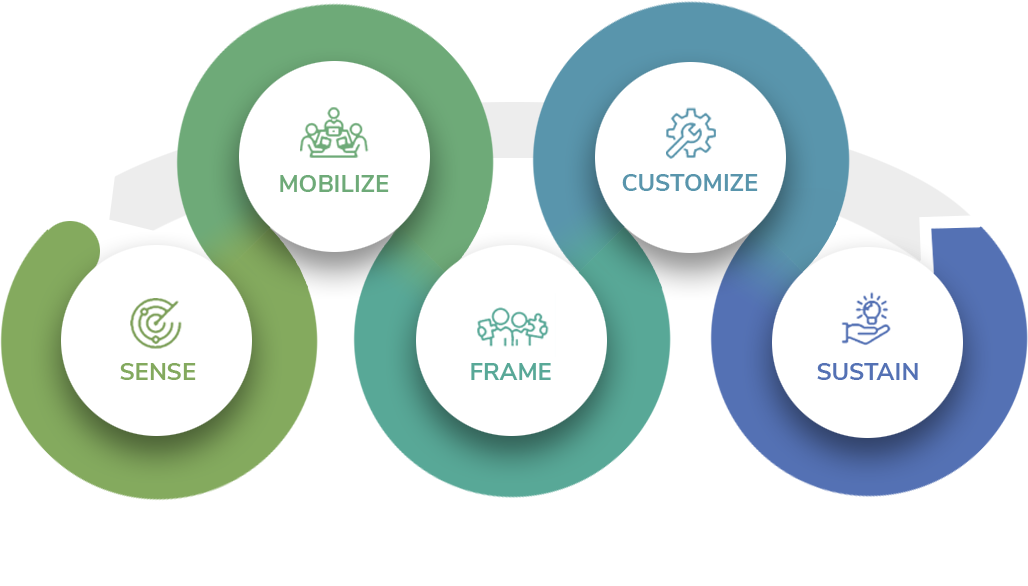Rest Assured: You’re not Alone!
Not to worry: you’re not alone, most organizations reach a point where they’re operating effectively, but not at all clear where to go next. Organizations that succeed in these situations recognize the counterintuitive notion that future success does not come from continuing to do the things that have made them successful so far.
There Are Immediate Practical Steps You Can Take
- Sense the environment: They take a fresh look at the environment around their organization and its industry. Where are disruptions occurring, emerging, or threatening? What are the digital and automated workflows considerations? How do these affect their strategies?
- Mobilize knowledgeable employees: In every organization there people who observe what’s happening. While sometimes considered troublemakers or disrupters, they often have the enterprise’s best interests at heart, but sit outside traditional positions of authority. Bring them together with enough others to span the entire business.
- Do a targeted diagnostic: What torpedoed the failed new ventures? What is keeping new and emerging technologies and digital applications from playing a role? Carefully consider how the prevailing culture and ways of working are part of the problem.
- Test and iterate: Charge the groups of knowledgeable employees with developing, testing, and adapting alternative operating processes and products & services. Encourage them to experiment and take risks outside the normal envelopes.

He commissioned the first immediate step as part of the Sense stage:
- Sense the environment: The leadership team assembled a “transition team” of a few trusted representatives to take a hard look at their environment & performance. They recognized the siloed functions and the resulting fragmentation of technology workers but did not immediately understand the potential disruption from continuous monitoring and analytics.
The next two immediate steps were taken as part of the Mobilize stage:
- Mobilize knowledgeable employees: As the transition team considered various structural and coordination solutions across the silos, the small largely ignored “integrated operations” study group asked for a hearing. Their presentation on recent developments and trends was stunning & compelling. The transition team invited them to join forces.
- Do a targeted diagnostic: The territorial functional silos were a huge issue, and the root causes centered on competing cultures, goals, and priorities. In particular, there was no leadership voice for technology and the technical functions. The transition team was the first real forum for openly exploring emerging technologies and the opportunities they presented.
The fourth step was a natural piece of the Frame stage:
- Test and iterate: As the transition team was carefully considering an operating model that consolidated the technical functions under a Technical Vice President, the CEO decided he couldn’t wait and brought in a recognized leader in the field to take on that role. With his involvement, the rest of the operating model quickly fell into place.
How Is It Turning Out?
In the Customize stage the focus shifted to close collaboration between the Operations and Technical functions on piloting integrated operations. Sensors across the platforms, pipelines, and processing plants were connected to an onshore command center. Staff from all involved disciplines learned to work seamlessly together in ways they had never imagined.
In the Sustain stage leadership delegated day-to-day operations to a cross-functional coordination council whose collective knowledge and wisdom guided this complex organization much more effectively than their previously siloed VP’s. They have consistently met or exceeded production and financial targets.
You Can Do This Too!
This is only one of many organizations missing opportunities that we have worked with. While every organization’s situation is unique, if some of the symptoms here mirror ones you are facing, give us a call and let’s further explore.
